Grape variety in Memory of Negrul
In memory of Negrul - one of the wonderful table varieties of the selection of the Moldavian Research Institute of Viticulture and Winemaking. Named in honor of Alexander Mikhailovich Negrul - one of the greatest Russian researchers in the field of breeding and genetics of the sun berry, "King of the Grapes", as N.I. Vavilov. Our hero was bred by a colleague and comrade of the famous scientist - Mikhail Semenovich Zhuravl in co-authorship with other employees of the scientific institution: I. P. Gavrilov, G. M. Borzikova, G. A. Savin, I. N. Naydenova.
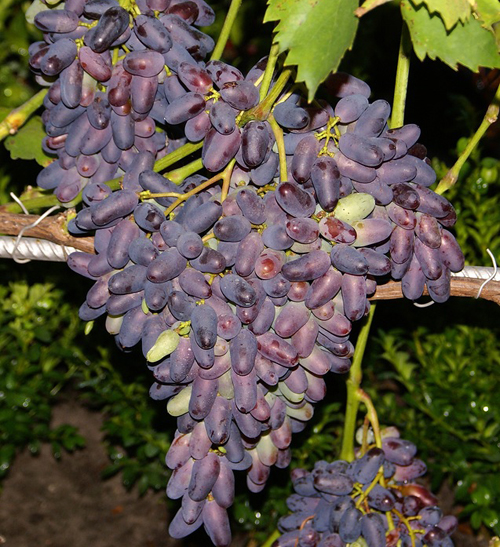
Moldovan breeders have always been famous for breeding not only hybrids remarkable in aesthetic and gastronomic characteristics, but also their high resistance to fungal diseases and pests, good regeneration after frost damage, and in some cases also tolerance to phylloxera. Such excellent qualities greatly simplify the reproduction and care of the vineyard, allow you to get environmentally friendly products, minimally treated with chemical plant protection agents.
It is quite natural that the variety, designed to become the memory of the great scientist, could not but possess all these outstanding characteristics. Due to its high resistance to mildew, oidium, anthracnose, gray rot, spider mites, leaf rollers and phylloxera, Memory of Negrul, in fact, can be considered the embodiment of the "ideal vine" - the dream of many winegrowers to return the culture to its traditional historical unpretentiousness. Indeed, before the appearance of aboriginal American pathogens in Europe, it was enough to stick a piece of vine with buds into the warm and humid earth so that it quickly rooted, began to form an aboveground growth, and for 3-4 years entered fruiting without special protection from harmful microorganisms. With the onset of the epidemic of phylloxera, mildew and oidium, this "golden age" of viticulture was interrupted, but over time, thanks to large-scale selection work around the world, there are grape hybrids that are not inferior in quality to purebred representatives of the "noble" species Vitis vinifera, but differ in that same time excellent immunity.
It is precisely this variety that is Pamyati Negrul, in which the genes of the maternal form - the ancient Moldavian variety Koarna nyagra (translated as "Black Horn"), are responsible for the excellent taste and appearance, and the well-known French complex interspecific hybrid Saiv Villard, whose pollen was used in the course of crossing. By the way, there is conflicting information about the paternal form, in some sources Muscat de Saint-Valier appears (Save Villard 20−473), and in others Pierrelle (Save Villard 20−366). Decades after the moment of crossing, it is difficult to establish for certain the truth in this matter, but this is probably not so important. Each of them could reward their descendant with colossal complex resilience.
The only drawback of an almost ideal variety can be considered a rather late period of ripening of the crop, which makes it possible to cultivate this grape only in the south.
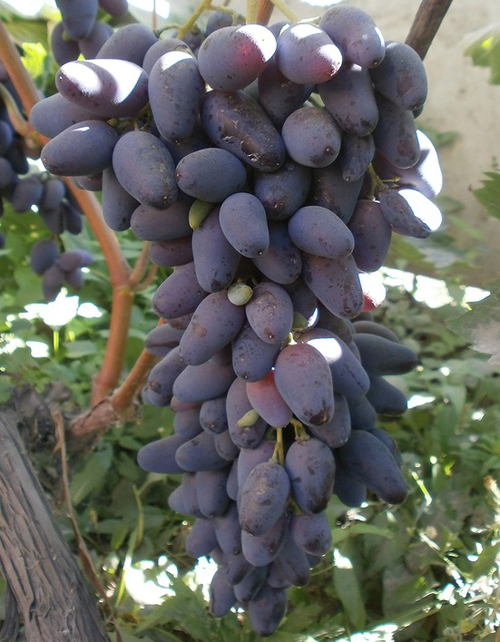
Agrobiological characteristics
Bushes of Memory of Negrul are vigorous. The crown of a young shoot is open, whitish-green with a distinct reddish tinge of young leaves. Adult leaves are large, elongated, with three or five lobes and moderate to strong dissection. The upper side of the leaf blade is reticulate-wrinkled, the reverse is covered with mixed bristly-cobweb pubescence of varying intensity. The upper lateral notches are usually open, lyre-shaped, less often closed with a narrow elliptical lumen. The lower notches are much shallower in depth, open slit-like or vaulted with a sharp bottom. The petiole notch is open, vaulted, with a sharp bottom.The petiole is long, green in color. The flowers of the grapes are bisexual, perfectly pollinated in any weather, the peas of the berries are not noticed. The shoots of this variety ripen well (up to 90%), gradually turning into a light brown color.
Bunches of medium and large sizes (on average about 20 × 12 cm), cylindrical-conical, with an average weight of 500-600 grams, but specimens weighing more than a kilogram often grow. The memory brushes of Negrul are loose, with a free arrangement of grapes, which prevents them from being squeezed, deformed and damaged against each other. The stems and stems of the berries are long, branched, light green in color with a brownish tint at the base of the brush. The berries are large, elongated with pointed tips or nipple-shaped, light or dark purple, with a thick protective waxy coating. The average berry length is 30 mm, diameter is 19 mm, weight ranges from 7 to 10 grams. They are all very aligned within the bunch. The pulp is dense, juicy-fleshy with a good harmonious taste without specific features in the aftertaste and aroma. The skin is medium thick, firm, crunchy and edible. There are 2-3 seeds in grapes, but they do not greatly reduce the gastronomic merits of the variety. The sugar content of the juice at the time of harvesting in the southern regions reaches 17 grams / 100 ml, the acidity is about 6 grams / liter. A little further north, the content of glucose and fructose in the juice drops to 14-15%. The tasting score of berries changes in a similar way: from 9.2 points for grapes grown under optimal conditions to 8.5 points in areas with insufficient light and heat.
In memory of Negrul, it is very popular when eaten fresh, and is also quite suitable for preparing blanks for the winter. It makes excellent compotes and preserves, elegant in color. The bunches are distinguished by their attractive appearance and elegance, and the total marketability of the crop is in the range of 80-90%. Unfortunately, during the period of mass harvesting, it is difficult to count on a high marginality and profitability of the variety due to the high supply of grapes on the market, and the corresponding low price. However, our hero has excellent suitability for long-term storage, which allows it to be realized in winter with minimal losses in quality. In addition, it easily transfers long-distance transportation, which provides farmers with even more opportunities for its implementation.
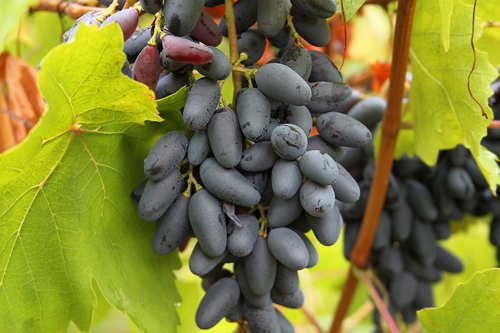
Negrul's memory belongs to the group of mid-late varieties. The onset of removable ripeness occurs, depending on the growing region, at the end of September - beginning of October. The growing season from the beginning of budding to harvesting ripe grapes is 145-160 days. The amount of active temperatures required by plants during this time reaches 2900-3000 ° C, which limits the area of grape cultivation to the regions of the North Caucasus, southern Ukraine and Moldova. For these places, it has quite sufficient frost resistance (-25 ° C) for growing in a non-covering culture.
The productivity of the variety is very high, despite not the most outstanding fruiting factors - 0.7 and fertility - 1.2. With proper spring pruning and careful regulation of the load at the stage of green operations, each hectare of planting is capable of producing up to 200 quintals of a high-quality crop. Arithmetically, this is about 10 kg per bush, but the best plants with a powerful skeleton and a large supply of perennial wood, which are fully cared for, give 20 kg of grapes per season without any problems and signs of overload. At the same time, a characteristic feature of the Memory of Negrul is the stability of fruiting over the years - only serious natural disasters can interfere with obtaining high yields.
After ripening, the crop can continue to hang on the bush, however, given its late maturity, in few places this period lasts longer than 10-12 days. The berries are usually not damaged by wasps and other bunch pests, but they can become easy prey for birds that do not deny themselves the desire to feast on the sweet berry in the fall.In addition, grapes can crack in the event of a prolonged period of autumn rains, especially if they suddenly replaced the summer drought.
Agrotechnical features
From the point of view of unpretentiousness and simplicity of agricultural technology, the variety can be called unique. He forgives inexperienced winegrowers many of their mistakes, is able to grow and bear fruit with dignity with minimal care.
In memory of Negrul, for planting, he prefers light fertile soils of gentle slopes with a southern exposure, but outside these ideal conditions it adapts well to flat areas and to a heavier soil composition. Only marshy, flooded areas, salt marshes, areas with a close groundwater table, lowlands and cold northern slopes are not acceptable for the variety. Due to the tolerance to phylloxera, grapes can be successfully cultivated on their own roots, which is facilitated by good rooting. However, on heavy clay soils, where the root pest is especially harmful, propagation by grafted seedlings based on phylloxera-resistant rootstocks is still preferable. The best options for rootstock forms are Riparia x Rupestris 101-14 and Berlandieri x Riparia CO4, with which our hero demonstrates good intergrowth.
Almost everywhere in the areas of widespread memory, Negrul grows without shelter for the winter. It is recommended to cultivate vigorous bushes of grapes according to the scheme of a two-armed cordon at an average height of the trunk. However, when trying to grow it in regions slightly north of the traditional zones, it is worth thinking about protection from the cold in winter. The most reliable option would be to choose a covering formation according to the principle of an inclined cordon or a multi-arm fan, thanks to which the vine can be easily removed from the trellis and buried in the ground for the winter. It is impractical to arrange additional insulation, since even in the northernmost regions, where the variety manages to ripen, winter temperatures are unable to damage its vine if it is covered with earth. Semi-covering formations are also quite appropriate here, in which most of the plant remains to winter on the trunk, and a lightweight lower tier is used as a reserve in case of frost damage, which is sheltered for the winter.
Vine bushes begin to bear fruit early, especially when planted with rooted cuttings. The load of adult plants with shoots and crops has its own specifics. Due to the low percentage of fruitful vines, during spring pruning, a significant number of eyes are left on the bushes of Memory of Negrul - up to 50. At the same time, the length of the pruning is quite short - 3-5 buds per fruit arrow. The increased load with the eyes is corrected during the debris, in which all sterile and weak shoots are removed, while maintaining 25-30 fruitful ones. It is advisable to leave only one bunch on them, due to which the brushes will grow larger in size and demonstrate better sugar accumulation.
During the growing season, the variety shows good drought resistance, but if there is an opportunity for watering, it should not be neglected. Irrigated bushes will not only respond with a significant increase in yields, but will also receive a reliable guarantee against cracking of berries, which can occur due to a sharp change in soil moisture during the ripening period, as is often the case in dry vineyards. Abundant water charging after harvesting, which will saturate the soil and the vine with moisture, perfectly preparing the grapes for the winter period, will also not hurt.
Against fungal diseases, one or two preventive spraying before and after flowering will be enough for our hero, which allows him to receive from the Memory of Negrul a crop that has minimal contact with chemicals.During the ripening of the bunches, the fruit zone is clarified, which contributes to their better conditioning, facilitates subsequent collection and is an additional protection against all kinds of rot due to active ventilation. Carefully harvested grapes are stored in cold dry cellars or refrigerators at a temperature of + 1 ° C ... + 4 ° C suspended or carefully laid out in a single layer in boxes covered with straw or sawdust. In this form, the harvest of this variety is preserved without any special losses until the New Year, and if you are lucky, even until spring.

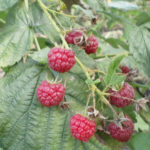
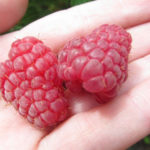

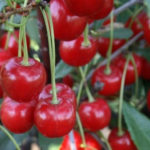
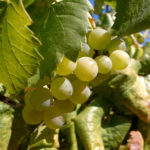



A bush of this grape variety has been growing since the spring of 2005. Ripens in September. The bunches are not very large, but they look pretty. The berries have a beautiful shape and a pleasant color. Tasty. The strength of the growth of the bush is small. We do not cover for the winter, but no freezing is observed. For all the time, there were only a couple of times cracking of the berries. We ourselves were to blame for this. It so happened that the bush was watered a lot before ripening because of the heat. And then it rained more often. A little sick. Basically, one preventive spraying with chemistry is enough per season. On the bush, the brushes keep well, but usually, after ripening, these grapes are quickly eaten.